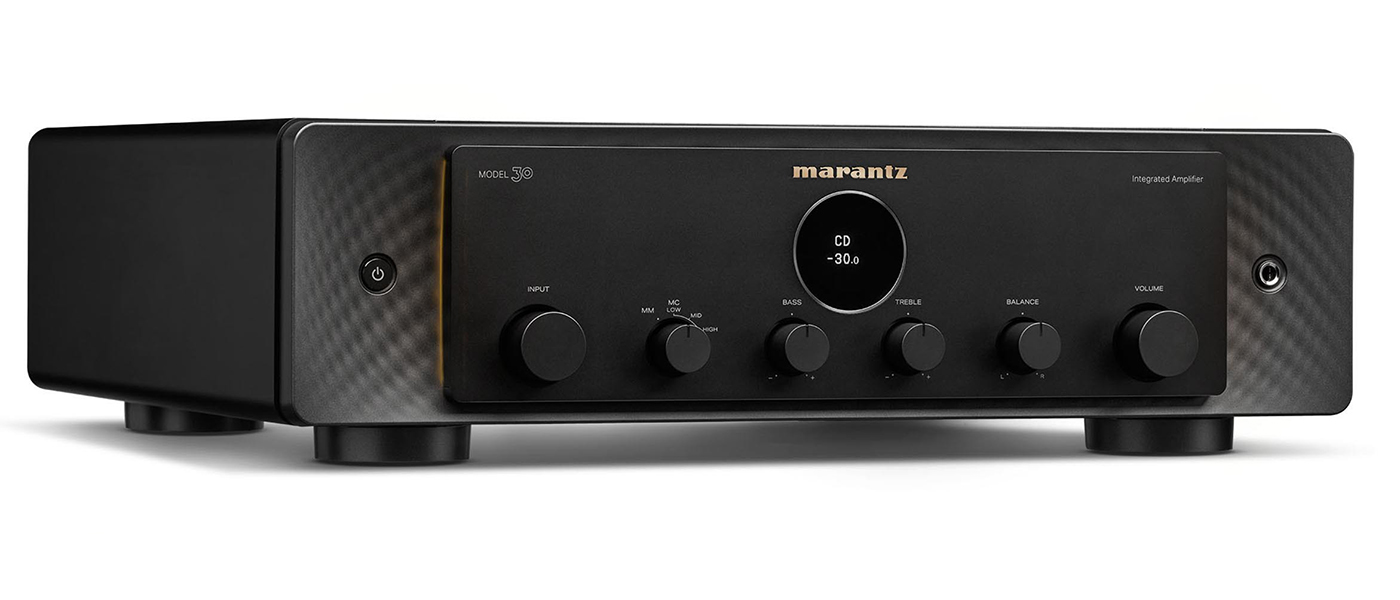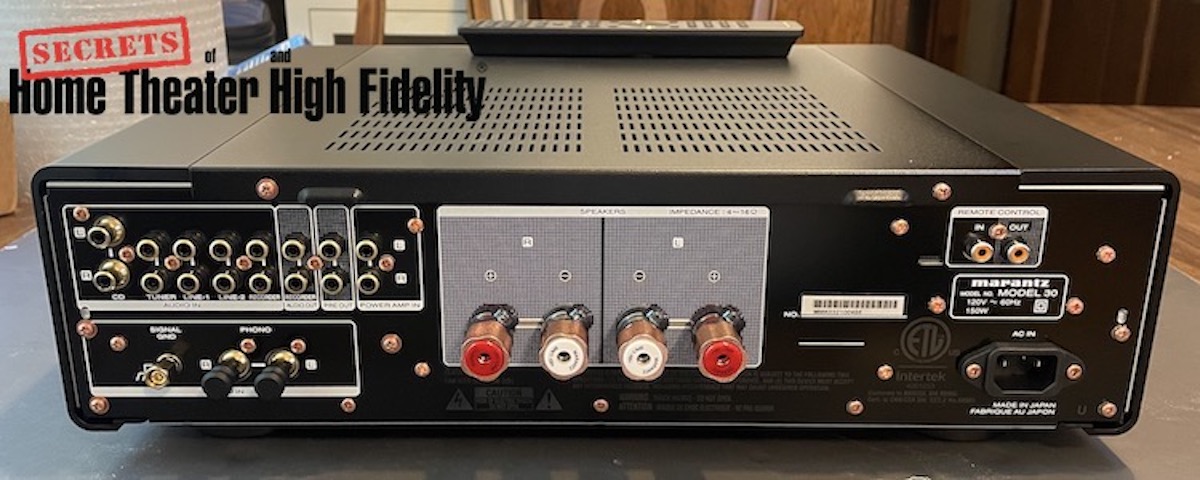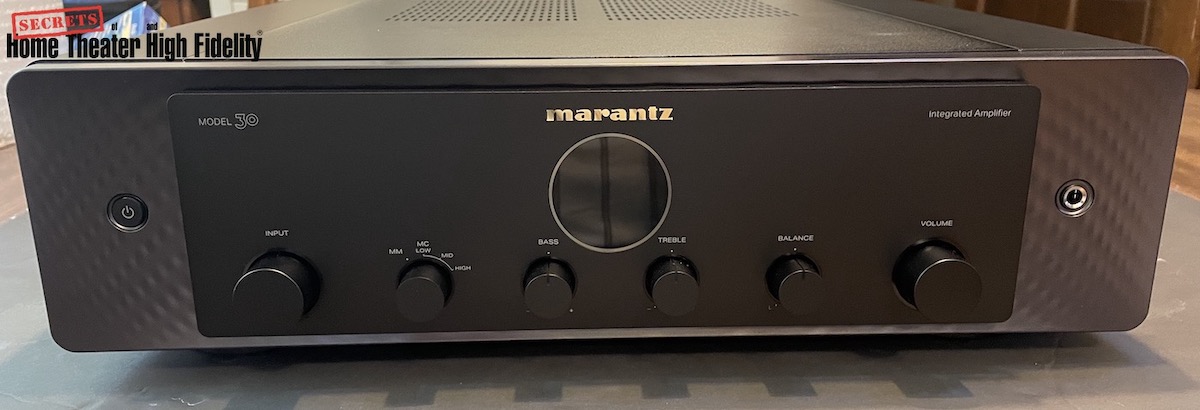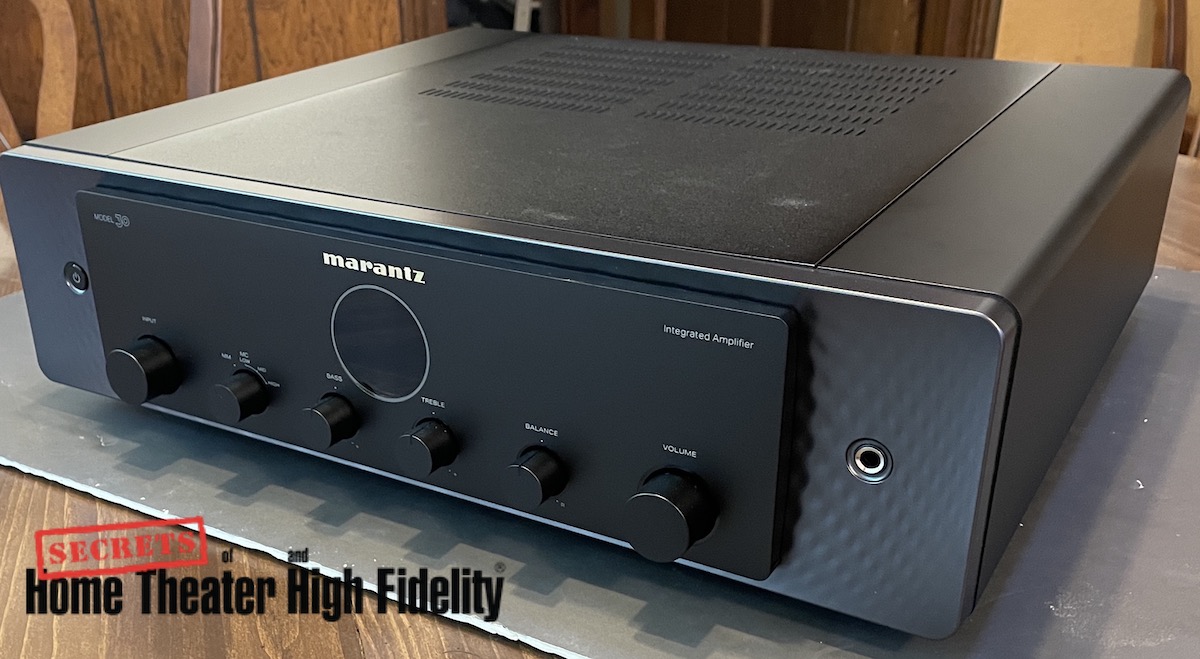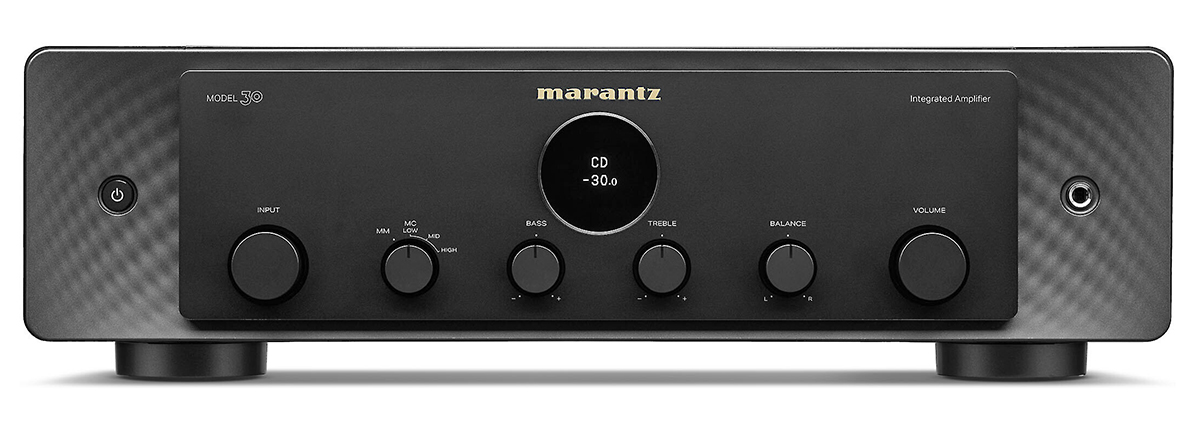The Marantz Model 30 Integrated Amplifier references the classic integrated amplifiers of the 1970s but updates that sound to some of the very best of current equipment. What it does, it accomplishes with great aplomb. That said, the amplifier lacks a built-in DAC. Marantz deliberately designed for sound quality “über alles” and seems to have hit their benchmark.
I can think of no amplifier product from 50 years ago that sounds as good as the Marantz Model 30 Integrated Amplifier. Its combination of a fully discrete Class A line stage and the Marantz’s High-Definition Amplifier Modules knocks the ball out of the park. If an analog integrated amplifier with phono stage is what you seek, look no farther.
If, however, you need twenty-first century accommodations such as digital inputs, then you’ll need additional equipment. Marantz explained that their intent with the Model 30 was to create a short-signal-path, all-analog amplifier unit with the companion Marantz SACD30n disc player as the digital hub of the two-piece system. Alas, I didn’t get one of those units to test, but other digital front ends (streamers, DACs, etc.) should work just fine.
The Marantz Model 30 Integrated Amplifier
- Spectacular-sounding Hypex Class D Power Amplifier modules.
- Adjustable phono input stage with selectable impedance and gain.
- Bass, treble, and balance controls included.
- Internal headphone amplifier included.
- Spiffy looking appearance.
- No digital inputs at all.
Even if your audio system is primarily digital, the Marantz Model 30 Integrated Amplifier will work just fine if your digital front end has unbalanced (RCA) analog outputs. However, if your primary audio source is vinyl records, this Marantz Model 30 Integrated Amplifier is a definite smash hit, particularly at its most reasonable price. I’ve used Marantz gear all the way back to the Marantz 1060 Integrated Amplifier, but nothing ever sounded this good before!
Rated Output Power:
100WPC @ 8 Ohms / 200WPC @ 4 Ohms.
Power Amp Technology:
Class D Hypex NC500/SMPS600
Power Transformer:
Toroidal with Case
Volume:
Via panel knob or via remote
Panel Controls:
Bass / Treble / Balance
Source-Direct Mode:
Yes
Frequency Range:
5-50kHz (no +/- range provided)
THD:
0.005% (1kHz @ 8 Ohms)
Damping Factor:
500
Input Sensitivities:
Phono MM – 2.3mV @ 39kOhms
Phono MC – 250
CD/Line/Recorder – 220mV @ 13kOhms
Power Amp Input – 1.1V @ 13kOhms
Signal to Noise Ratios:
Phono MM – 88dB
Phono MC – 75dB
CD/Line – 107dB
Remote Control:
Non-backlighted dual controller for Marantz Model 30 & SACD
12-Volt Trigger:
No
Size (W, H, D):
17 x 5.1 x 17 inches (433 x 130 x 432mm)
Weight:
32.6 pounds 14.8kg
Power consumption (full load):
130W
Power consumption (standby):
0.2W
Front Panel:
Silver or Black with variable lighting on side panels
Warranty:
3-year, limited
Return policy:
60 days.
Typical retail price:
$2,500 USD
Website:
Company:
SECRETS Tags:
Marantz, Model 30 Integrated Amplifier, 2-channel, stereo, amplifier, integrated, Amplifier Review 2021
- Marantz SACD 30n Network Disc Player
- PASS-Labs INT-25 Integrated Amplifier
- Yamaha A-S301 Integrated Amplifier Review
- PS Audio Stellar Strata Integrated Amplifier Review
Let’s discuss looks. If you’re at all aesthetically inclined, you’ll probably just love the looks of the Marantz Model 30 Integrated Amplifier. The front panel is sectioned into a central smooth panel that contains the controls and, in the background, a textured panel that contains a single visual focus point on each side – the power switch to the left, the headphone jack to the right. The side panels are illuminated by hidden LEDs behind the central panel, controllable from the remote. The central round badge of the amplifier contains the information LEDs and the pilot light star logo for startup. As a side note, I thought the built-in headphone amplifier sounded far better than most.
I do take minor umbrage with the Marantz’s remote control. While being a nice metal unit that appears durable and functional, the remote lacks motion-activated back lighting. If you like to listen in the dark as I often do, then remote controls tend to sneak off and hide themselves routinely. With a motion-activated lighting feature, a wiggle on the couch seat promptly reveals the location of the remote control. This is a great feature and one that I wish all manufacturers would adopt.
I did ask Marantz why they didn’t use backlighting, and their reply was those backlit remote controls “are less relevant for Hi-Fi than Home Theater and that backlit keys can make remotes look cheaper given the transparent buttons, which didn’t make sense for the premium aesthetic of the Model 30.” I understand the design choice, but if I’d been on the design team, I’d have put at least a single motion activated LED somewhere on the remote.
If you’re an older vinyl enthusiast (or, for that matter, a new one), this Marantz does offer variable options for phono cartridge gain and loading. Both can be adjusted from the front panel and once set for your cartridge should not be needed again until you change cartridges. These settings are intended to ensure that you get the maximum performance from your phono cartridge. The control also does away with the need for a phono pre-preamplifier.
Although I no longer have any vinyl to listen to, I loaned this Marantz Model 30 integrated amplifier to a friend who still routinely plays records, and he reported that the phono section is fully as great as the preamplifier and power amplifier sections of this unit. He said that the cartridge loading features for the moving coil cartridges allow tuning of the sound, ensuring that the high-end extension and dynamics are optimum. Note that the Marantz has selections for both moving magnet and moving coil cartridges, and that there are three different input impedances available for moving coils so that the treble can be optimized.
And now for a real mystery….
The volume-controlled preamplifier out jacks of the Marantz Model 30 can be used to feed an outboard power amplifier and/or a subwoofer or two.
Alternately, outboard preamplifiers or volume-controlled sources can be used to directly feed the power amp inputs of the Marantz Model 30.
But you can absolutely NOT use both the preamplifier output and the power amplifier input at the same time. Why? Because Marantz has linked both the preamplifier input and the power amplifier input to the same selector switch.
I wanted to use the pre-out jacks of the Marantz Model 30 to feed an electronic crossover or an outboard equalizer and then route the signal back into the power amp input jacks. Nothing doing! Once you switch the Marantz to its power amp input jacks, the control switching of the preamp inputs is disabled. You can NOT select a preamplifier input source while the input selector switch is set to power amp input.
You either get pre-out OR power-in, but never, ever both simultaneously. This is an unfathomable design choice by Marantz. What were they thinking? A simple external pre-out/main-in jumper such as that used by many manufacturers (including Marantz, in their earlier years) could have avoided this issue. I realize this isn’t a feature that everyone will want or need but I would have liked the added flexibility of that option to experiment with.
If you prefer balanced circuitry for noise reduction, then you’re also out of luck with the Marantz Model 30 integrated amplifier – it features unbalanced RCA input and output jacks only. Despite this, I had no noise or hum problems with this amplifier.
One other comment about the In/Out functions of the Marantz Model 30 – There is no summed monophonic subwoofer output jack, only the right and left channel pre-out jacks. Now if you’re running stereo subwoofers, and the subs are located in rough proximity to their associated satellite speakers, this is no issue. However, if you’re running a single subwoofer, you want both the right and left channels merged into a single mono out signal. This can be accomplished via either a Y-cable, or with an outboard buffer that can allow summing of signals.
- Apple Mac Mini running Roon with Qobuz as well as internal SSD library in wav format.
- AudioQuest Dragonfly Black 1.5 USB DAC.
- AURALiC Aries Mini used as a USB DAC.
- Emotiva Big Ego+ USB DAC.
- Dayton DSP-LF subwoofer equalizer.
- Emotiva Virtual Copper wireless subwoofer connectors.
- Klipsch RP600m bookshelf satellite speakers.
- Klipsch R-12SW subwoofer (equalized by the Dayton).
- Kimber Kable interconnects.
- 18’ Canare 4S11 bi-wire speaker cables with banana plugs.
- VTI VSP29S speaker stands.
What does the Marantz Model 30 Integrated Amplifier actually sound like? And here, we get to some really, really good news. This is an excellent sounding amplifier with no significant shortcomings. Will it be the perfect amp for everyone? Not by a long shot. One main shortcoming of the Marantz is its 100-WPC rating with 8 Ohm loads. This will remove the amp from consideration with the spec-readers who firmly believe that more power is better power. Considering that the average listener uses less than one watt for normal living room volumes, this Marantz has more than enough real-world power to make virtually any speaker dance.
That said, if you’re one who has extremely low impedance loudspeakers (Thiel 5i, some electrostatic speakers, or multiple speaker pairs in parallel) this might not be the best amplifier choice. Also, if you’re trying to power frat-house parties or football stadiums, this probably isn’t the right tool for the job either. But for 99.99% of home listeners, this Marantz works just fine!
I ran the Marantz Model 30 Integrated Amplifier through my usual list of pop, international, and “odd” music, and it sounded absolutely great. I then spent an evening with classical – everything from piano solos to chamber music to full orchestra extravaganzas. And again, the Marantz sounded great. For the third night, I put on all my electronica favorites (Kraftwerk, Yello, Suba, Suzanne Sundfør, and more) and once again, the Marantz sounded amazing! Folk music, oldies, jazz, you name it, the Marantz definitely seemed to bring out the best.
Have I found ANY type of music that the Marantz doesn’t excel at? Not yet. But I’m still listening… What makes the Marantz so strait-laced in its proclivities? The bass is tight and very tuneful. The pitch of string bass and cello notes is easily followed whether the instruments are bowed or plucked. The bass extension (subwoofer driven off the Marantz’s preamplifier output jacks in my system) is prodigious. For example, try “Flight of the Cosmic Hippo” by Bela Fleck or “How Great Thou Art” by Valor. The Marantz brings it on in the bass.
The Marantz’s midrange is very dynamic without ever becoming brash (this is a very tight rope to walk). I like to test amps with complicated music like the Seekers’ and the Pentangle’s live performances. If the voices and instruments remain discreet instead of blending into mush, the amplifier is doing its job. The Marantz does. Another test for midrange is Goran Brevogić’s “Maki Maki.” The voice is somewhat recessed at times in relation to the instruments and other general musical mayhem in the background. If the lower-volume comments and asides are clearly audible in this piece, then the amplifier has got exceptional midrange definition. The Marantz does.
Finally, in the treble, the Marantz Model 30 seems to me to be somewhat of a chameleon. On some material, transients like bells, wood blocks and snare snaps, seem to stand out a bit too much. Yet on other material, the same types of sounds seem somewhat reduced in amplitude. This is all familiar musical material, and the variation in treble is not so vivid with other amplification. Is the variation an artifact of the recording (and other amplifiers just fail to reproduce it accurately), or is the Marantz Model 30 dynamically uneven in the treble? I don’t yet know. That said, I’m not trying to imply in any way that the Marantz Model 30 integrated amp is at all BAD in the treble – quite the contrary. But if I’m looking for nits to pick (and I really am, here), then the treble is where I’d find them.

Balkan Beat Box “Balkan Beat Box”
From the original Balkan Beat Box CD comes the gem “Sunday Arak.” In this cut, I found that the percussion and the saxophones were particularly vivid. Sometimes, drums can become wooly during the amplification process, but these were startlingly clear. The saxophone is also sometimes smoothed out in the amplifier, but the saxes in this song maintained their rough edges and “in your face” attitude through the Marantz.

Balkan Beat Box “Nu Med”
From the Balkan Beat Box album “Nu Med” comes the track “Joro Boro.” Once again, the brass horns (trumpet & trombone) wowed me on this song, as did the bass guitar. Extension and clarity were perfect through the Model 30.
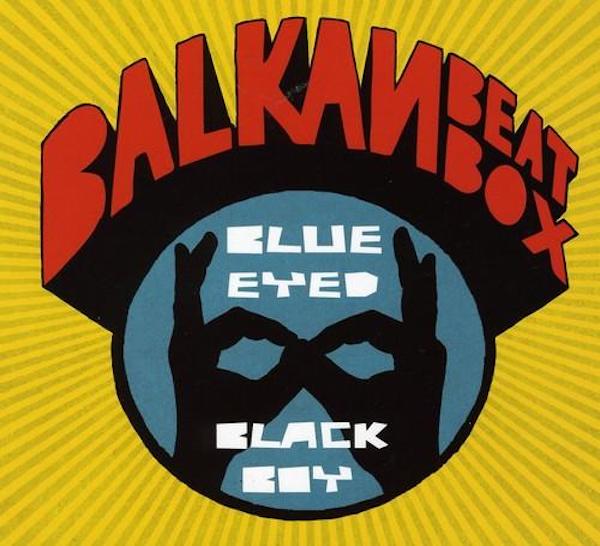
Balkan Beat Box “Blue Eyed Black Boy”
From the Balkan Beat Box album “Blue Eyed Black Boy” (easy to note what I’ve been listening to lately, isn’t it?) comes the song “Dancing with the Moon.” What I found particularly fetching in this cut was the bass, percussion, and the vocals. An amp that can’t produce accurate vocals isn’t in the running. The Marantz Model 30 has a lovely midrange!
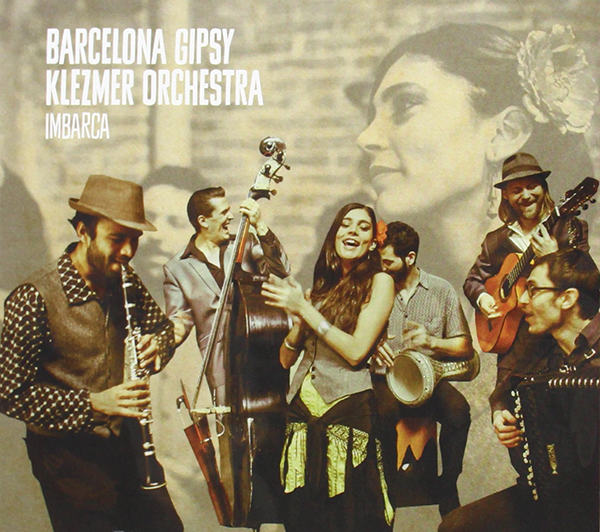
Barcelona Gipsy Klezmer Orchestra “Imbraca”
From the Barcelona Gipsy Klezmer Orchestra’s album “Imbraca” comes the classic “Shalom Alechem.” This is a tour-de-force for acoustic guitar & bass, with some serious dynamics on the voice, clarinet, and accordion. Some amplifiers can make the peaks of this song real ear-scorchers. The Marantz, however, brings the volume perfectly without any hint of overload. So far, so good!
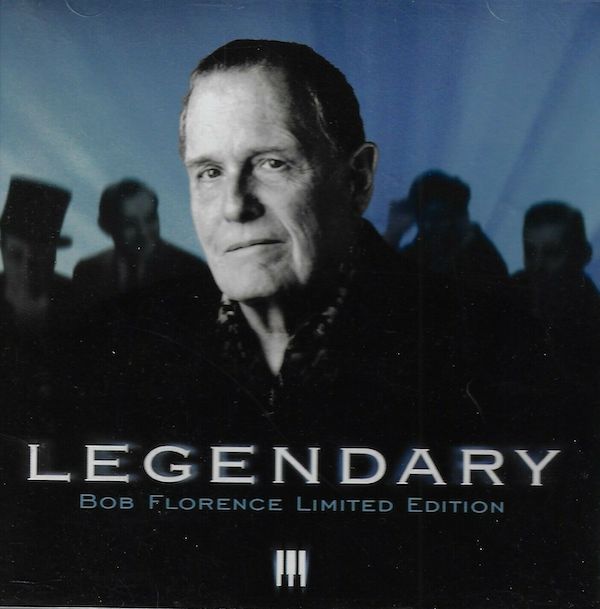
Bob Florence Big Band “Bob Florence Big Band”
From their CD of the same name, the Bob Florence Big Band delivers with “It Happened in Monterrey.” The upper percussion sounds including bells stand out on this recording through the Model 30. Triangles and bells are hard for many amplifiers to reproduce. In real life acoustic performances, these sounds float above the other instruments and are clearly audible without being significantly louder than the background horns. With the Marantz, you hear what sounds like a live performance!

Bomba Estéreo “Blow Up”
The album “Blow Up” by Bomba Estéreo contains the song “Cosita Rica.” The natural ambience that starts the song is startling, as are the vocals. Again, throwing a soundstage wide and deep enough to mimic a natural location is something that many amplifiers just can’t do. The Marantz Model 30 opens up this piece with ease.

Gogol Bordello “Trans-Continental Hustle”
“Trans-Continental Hustle” by Gogol Bordello gives us “Immigraniada,” the in-your-face anthem of disaffected immigrants. Whether or not you agree with the politics, the voice of Eugene Hutz and the dynamics in the song should startle you if properly reproduced. The Marantz gets it right.
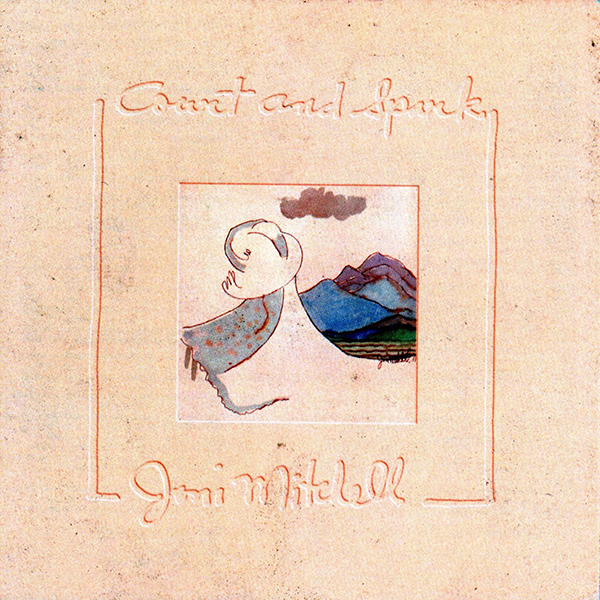
Joni Mitchell “Court and Spark”
Joni Mitchell’s classic “Court and Spark” album yields this lovely ditty called “Twisted.” The Model 30 allows the naturalness of Joni’s voice to come through clearly and does a good job of clarifying the aside mutterings of Cheech & Chong. Plenty of fun here!
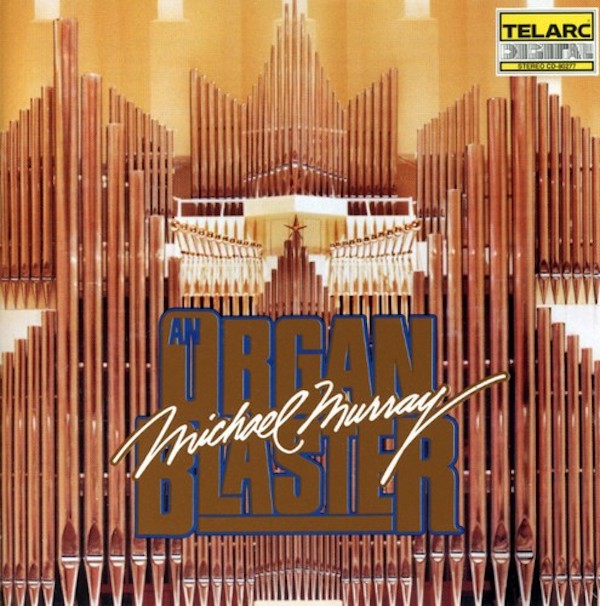
Michael Murry “An Organ Blaster”
Michael Murry’s “An Organ Blaster” on the Telarc label gives us Charles Marie Widor’s “Toccata from Symphony 3.” Were there any doubt left about the bass extension of the Marantz Model 30, consider it satisfied. This classic Organ Symphony delivers shuddering bass that this integrated is not shy of at all.
If you seek the perfect classic integrated amplifier, the MARANTZ MODEL 30 is for you! Great sound for a reasonable price with phono stage.
- Awesome sound – This is my first exposure to the Marantz HDAM Class-D Hypex modules, and Marantz does them right!
- Flexible phono options including selectable gain and cartridge loading.
- Bass, treble, and balance controls included.
- A really nice-sounding headphone amplifier with front-panel jack.
- Cool speaker connectors with setscrews for bare wires.
- Pre-out / Main-in jumpers to allow use of both pre & power sections of the Marantz simultaneously.
- Optional wood case.
- Balanced XLR input options (NOTE: These ARE offered on the Marantz PM-10).
- Back-lighted, motion-activated remote control (to heck with aesthetics – form follows function!)
- Built-in stereo subwoofer crossover or else an outboard crossover unit from Marantz.
- Switchable rumble filter for the phono input to deal with record warp.
The Marantz Model 30 Integrated Amplifier is in some ways, something of an anachronism. Its lack of digital circuitry may rule it out of consideration for some audiophiles. However, if you’re the consumer who wants the ultimate in simplicity AND great sound in a minimum number of boxes, this amplifier could serve as a great anchor for your stereo sound system.
On the other hand, if you have a primarily phonograph-based system and/or a separate digital front end, you get amazing sound at a fraction of the cost (but 99% of the sound quality) of MUCH more expensive separates systems. So, consider carefully what you want from an integrated amplifier, and if the Marantz Model 30 meets your needs, then buy without worries! The sound quality of this integrated amplifier more than justifies its price.



